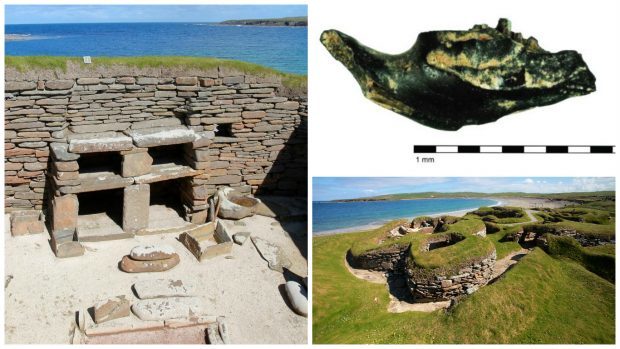Cheryl Livingstone
It provides the missing link between The Flintstones and Mickey Mouse.
Because researchers have just discovered that Stone Age people used to tuck into rodent roasts, as part of their daily fare on Orkney.
The findings by archeologists in Scotland suggest that mice and voles weren’t considered mere pests in ancient European society, but also a source of nutrition.
The results of their research came after examining burnt vole bones which were roasted before they were eaten at Skara Brae in Orkney 5,000 years ago.
The stone-built settlement consists of eight clustered houses and is older than both Stonehenge and the Great Pyramids.
Remains discovered there are thought to be the earliest evidence of rodents being used as food by people living in Europe.
Most of the bones were concentrated in household waste which suggested they were put there by inhabitants from the centre of the settlement
Dr Jerry Herman, Senior Curator of Mammology at National Museums Scotland, was the lead author of the paper.
He said: “We studied rodent bone remains to see if we could find out anything about the relationship between the people who lived at Skara Brae and the rodents that were also there at the time, 5,000 years ago.
“Most of the remains were from voles, a kind of small rodent that is common in pastures used for grazing animals.
“Far more of them were in the refuse at the site itself, compared to locations nearby that were also excavated.
“Voles would not usually be found in human habitations, so it was clear that something must have led to their presence in such numbers there.
“The remains were mixed with other human refuse, showing that they were likely to have been put there by the people who lived there, rather than birds of prey or other animals.
“Many of the remains were also burnt, as if they had been roasted on a fire, suggesting that they were being cooked and presumably eaten.
“This is the earliest evidence we have for rodents being used as food in the European continent.”
Researchers from the National Museums of Scotland examined about 60,000 bone fragments.
Skeletal remains of rodents are commonly found in archaeological assemblages from around the world.
The study revealed that the large amount and nature of the burnt bones found at the site indicate they were a source of nutrition and could have been the subject of early pest control.
Voles are small rodents similar to mice, but with a stout body and shorter hairier tail as well as smaller ears and eyes.
